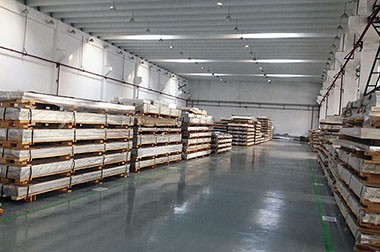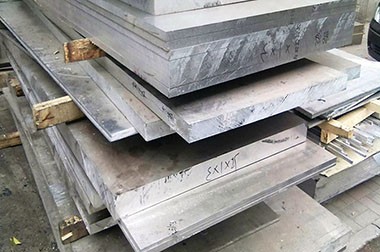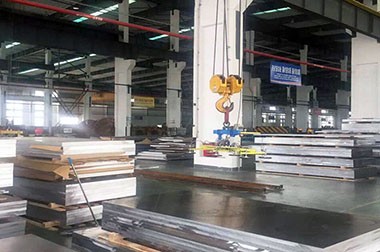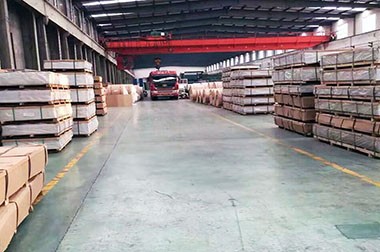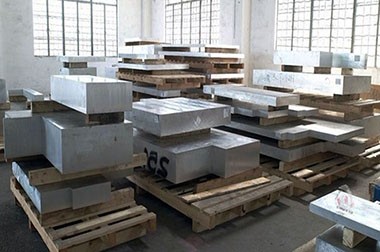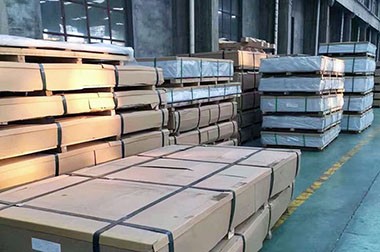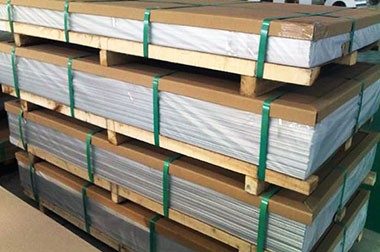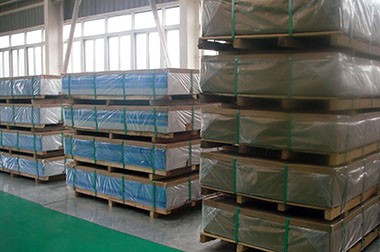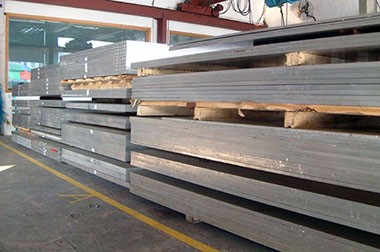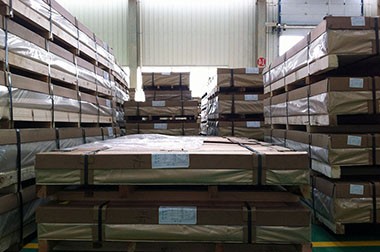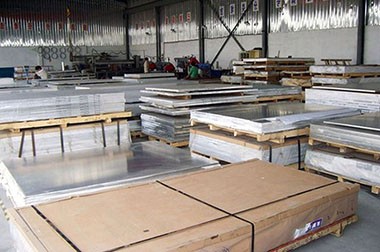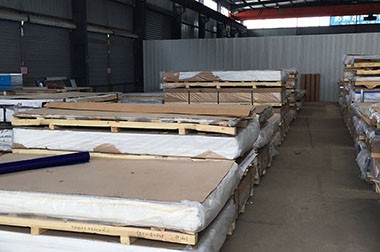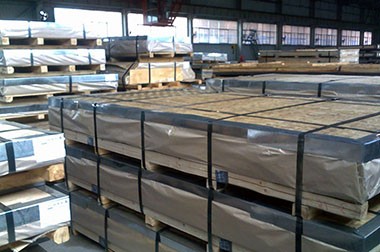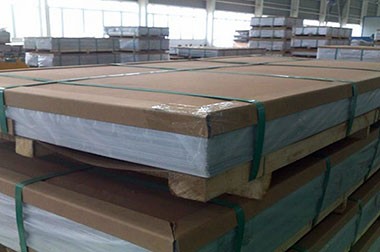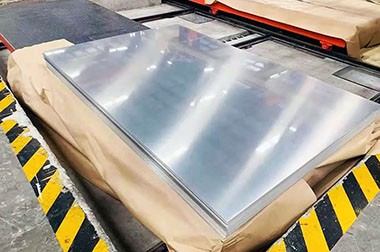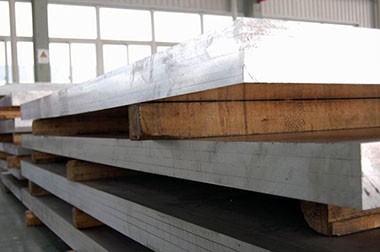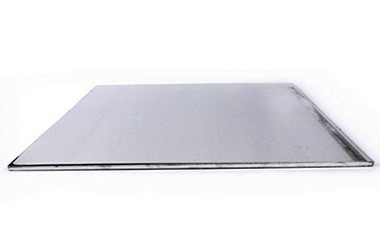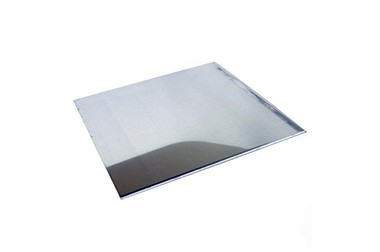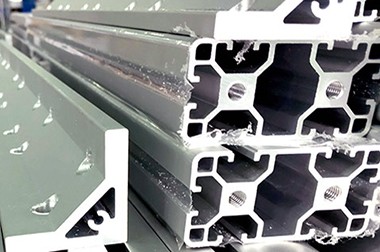7150 T7751 T6151 Aircraft Aluminum Plate
7150 aluminum plate is a high-strength aluminum alloy plate, belonging to the 7xxx series (Al-Zn-Mg-Cu system) ultra-high strength aluminum materials.
7150 aluminum is a high-strength, heat-treatable aluminum alloy designed specifically for aerospace and defense applications. It combines excellent strength, fatigue resistance, and corrosion resistance, making it an ideal choice for manufacturing critical structural components of aircraft and spacecraft.
7150 aluminum is a high-strength aerospace-grade alloy whose main components include aluminum, zinc (5.6–8.2%), magnesium (1.9–2.9%), and copper (1.2–2.6%). This material is heat-treatable and optimized for applications requiring excellent strength-to-weight ratio, corrosion resistance, and fatigue performance.
7150 aluminum plate is a high-strength, heat-treatable wrought aluminum alloy in the 7xxx series. It was developed to improve upon the performance of 7050 and 7075 aluminum alloys and is specifically used in aerospace and structural applications demanding superior strength, fracture toughness, and corrosion resistance.
7150 aluminum plate is further optimized through heat treatment processes (such as T6, T651), meeting aerospace (such as AMS standards) and marine industry certification requirements.
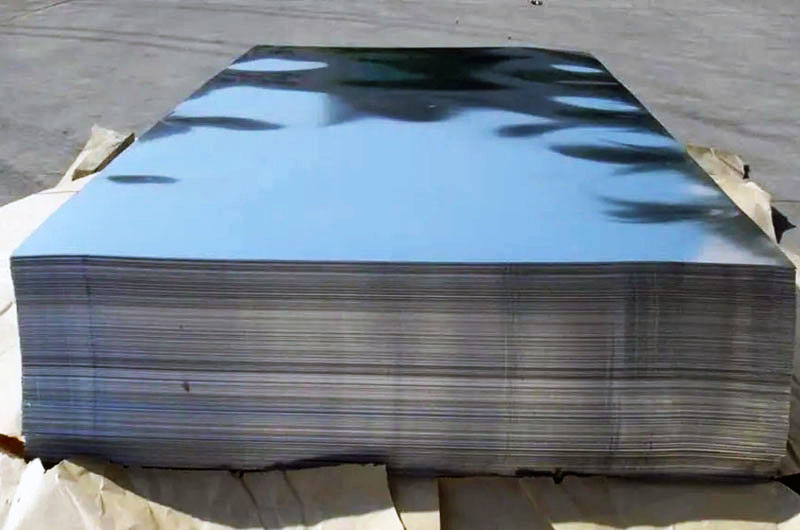
7150 aircraft aluminum sheet size
| Alloy | Temper | Thickness(mm) | Width(mm) |
| 7150 | T7751 | 4-260 | 1200-3800 |
7150 Aluminum Plate Available Tempers
7150 aluminum alloy is available in a variety of tempers to meet different application needs:
- T651: Solution heat-treated, stress-relieved by stretching, and artificially aged.
- T77: Provides better corrosion resistance while minimizing strength loss.
- T7751: Enhanced strength and corrosion resistance, commonly used in aerospace applications.
- T6151: Combines good strength with better machinability.
7150 aluminum plate is an excellent material choice for high-performance aerospace and defense applications, achieving the best balance among strength, weight, and corrosion resistance. Its adaptability to various tempers and outstanding mechanical properties make it a preferred alloy for critical structural components.
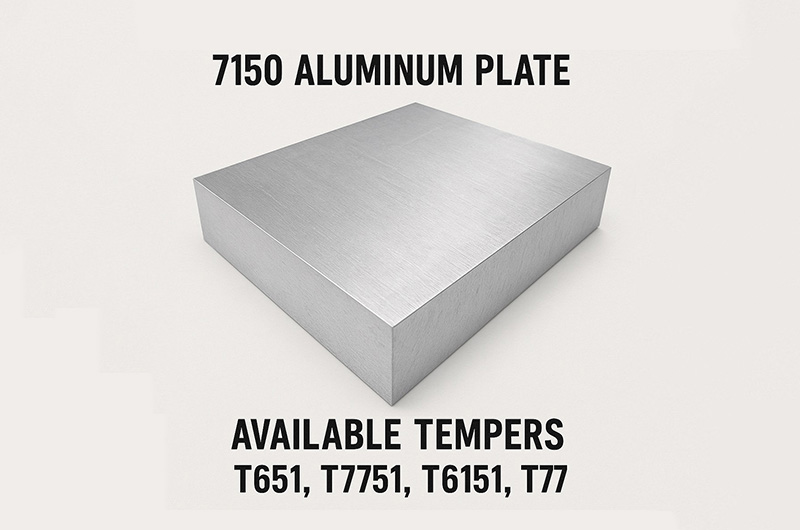
Properties of 7150 Aircraft Aluminum Plate
- High Strength: 7150 aluminum plate offers very high tensile and yield strength. Depending on the temper, its tensile strength exceeds traditional alloys like 7075 and 2024, making it suitable for applications that require lightweight yet robust materials.
- Heat Treatable: This alloy can achieve higher strength through heat treatment. It is typically processed in the T6 condition, including solution heat treatment and aging.
- Corrosion Resistance: It has good corrosion resistance, especially in T77 and T79 tempers, outperforming older 7xxx series alloys. However, it is not as corrosion-resistant as some other aluminum alloys, particularly the 5000 series. Thus, protective coatings or finishes are often recommended in certain environments.
- Machinability: This alloy can be machined, but due to its high strength and potential brittleness under certain conditions, care must be taken to prevent cracking.
- Lightweight: With a density of 2.71–2.86 g/cm³, it is about 30% lighter than steel.
- Stress Corrosion Resistance: Improved through over-aging treatments (e.g., T77 temper).
- Excellent Fatigue Performance: Suitable for components subjected to cyclic loads.
7150 aerospace aluminum sheet chemical composition
| Element | Composition(%) |
| Al | Rest |
| Zn | 5.6%-6.3% |
| Mg | 1.9%-2.6% |
| Cu | 1.2%-2% |
| Mn | 0.15%-0.4% |
| Cr | 0.18%-0.28% |
7150 aerospace aluminum sheet mechanical property
Below is a comparison table of the mechanical properties of 7150 aluminum alloy in T7751 and T6151 conditions:
- High tensile strength, maintaining excellent performance below 150°C, with outstanding low-temperature strength.
- Excellent hardness and fatigue strength, suitable for high-stress environments.
| Performance Parameters | T7751 (Solution heat treated, stress-relieved by stretching, artificial over-aging) | T6151 (Solution heat treated, stress-relieved by stretching) |
| Ultimate Tensile Strength | 570 - 590 MPa | 500 - 530 MPa |
| Yield Strength (0.2% offset) | 500 - 530 MPa | 460 - 490 MPa |
| Elongation at Break | 9% - 11% | 12% - 14% |
| Shear Strength | ≈ 450 MPa | ≈ 420 MPa |
| Hardness | 140 - 160 HB | 120 - 140 HB |
Key Differences:
- T7751 provides higher ultimate tensile strength and yield strength, with excellent exfoliation corrosion resistance, making it suitable for aerospace structures with high strength and corrosion resistance requirements.
- T6151 has higher elongation, making it suitable for applications that require better formability, though it has relatively lower corrosion resistance.
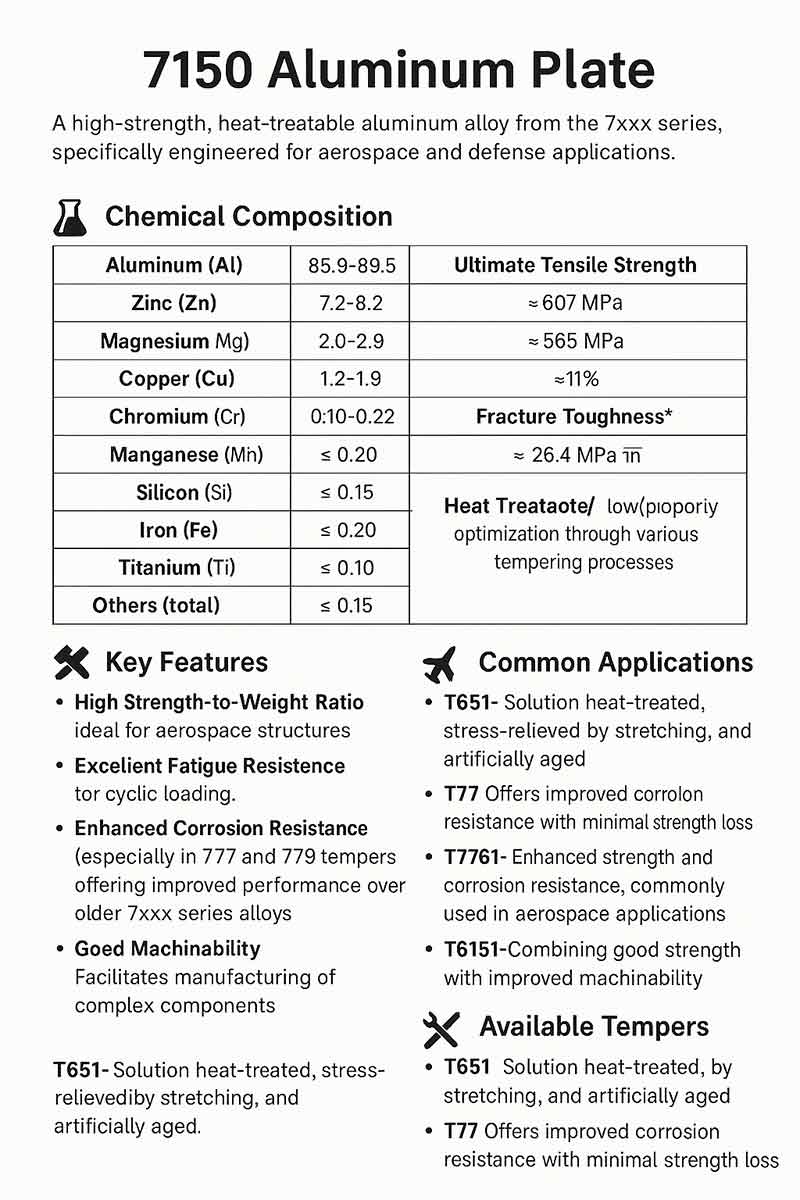
7150 T7751 Aircraft Aluminum Plate
- Processing: T7751 refers to the aluminum alloy state that has undergone special heat treatment and aging, usually providing higher tensile and yield strength, thereby enhancing the mechanical properties and corrosion resistance of the material.
- Characteristics: In the T7751 condition, 7150 aluminum alloy exhibits extremely high strength and good toughness, making it suitable for applications that endure high loads and impacts.
The 7150 T7751 Aircraft Aluminum Plate maintains good performance in high-temperature and high-pressure environments, making it suitable for aircraft engine components and high-stress applications.
7150 T77511 Aircraft Aluminum Plate
T77511 is similar to T7751, undergoing solution heat treatment and stress relief by controlled stretching, followed by artificial over-aging to achieve excellent exfoliation corrosion resistance. The product does not require further straightening after stretching but may undergo slight straightening to meet standard tolerances.
7150 T6151 Aircraft Aluminum Plate
- Characteristics: T6151 has slightly lower strength but still offers good corrosion resistance and machinability.
- Applications: Suitable for structural components, casings, and other parts in aerospace, transportation, and similar fields.
7150 T61511 Aircraft Aluminum Plate
T61511 is similar to T6151, undergoing solution heat treatment and stress relief by controlled stretching (with permanent deformation of the plate ranging from 0.5% to 3%, and thick plates from 1.5% to 3%), followed by under-aging to enhance formability. The product does not require further straightening after stretching but may undergo slight straightening to meet standard tolerances.
7150 Aluminum Plate Applications in Aerospace
- Fuselage Components: Such as fuselage skin, frames, and supporting structures, the high strength of 7150 aluminum alloy ensures the stability and safety of the fuselage during flight.
- Wing Skin: The wing is one of the most critical structures of an aircraft; the lightweight characteristics and strength of 7150 aluminum alloy make it an ideal material for wing skins, helping to improve the aircraft's lift and flight performance.
- Wing Spars and Supporting Structures: Wing spars are the main load-bearing structures of the wings; using 7150 aluminum alloy ensures that the spars have sufficient strength and stiffness when bearing flight loads.
- Other Critical Components: Including landing gear supports, engine mounts, etc., these components need to withstand significant mechanical stress, and the excellent properties of 7150 aluminum alloy can meet these requirements.
Other Applications of 7150 Aluminum
7150 aluminum is critical in high-stress aerospace and defense applications:
- Military/Defense: Missile bodies, spacecraft frames, and armored vehicles.
- Marine and Racing: Hulls and high-speed vehicle frames.
- Transportation: Used in vehicle structural parts, ship decks and hull materials, taking advantage of its high strength and corrosion resistance to reduce weight.
- Industrial and Civil: Large heat exchangers, tanks, and other pressure vessels, electronic heat dissipation components (high thermal conductivity), and sports equipment such as tennis rackets and softball bats in high-strength lightweight applications.
7150 Aluminum Plate Production Standards and Certifications
- Standards: AMS 4252A (T7751), AMS 4306 (T6151), ASTM B209
- Certifications: ISO 9001, AS9100 (Aerospace), NADCAP (Heat Treatment/Nondestructive Testing)
7150 Aluminum Plate Machinability
- Good plasticity after solution treatment, and strength can be significantly improved through heat treatment (such as T651 temper).
- Welding performance is average; cladding or anodizing is recommended to enhance corrosion resistance.
- Good formability; can be bent 90° without cracking.
7150 Aluminum Plate Environmental Resistance
- Prone to stress corrosion cracking, but dual-stage aging process can improve stress corrosion resistance.
- Strong resistance to seawater corrosion, suitable for marine and offshore engineering.
Comparison with Other Alloys
- Compared to 7075: 7150 generally has better fracture toughness than 7075, making it more popular in certain applications.
- Compared to 6061: While 6061 is more versatile and easier to weld, 7150 offers higher strength.
- Compared to 7075: 10–15% higher strength and better fracture toughness.
- Compared to 7075: 10–15% higher strength and better fracture toughness. Compared to 7055: Slightly lower strength, but superior weldability and cost-effectiveness.
Comparison to Other Alloys:
| Alloy | Strength | Toughness | SCC Resistance | Corrosion Resistance | Application Use |
| 7075 | Very High | Moderate | Fair | Fair | Aircraft, sports |
| 7050 | High | High | Good | Good | Military aircraft |
| 7150 | Very High | High | Excellent | Excellent | Advanced aerospace |
7150 aluminum plate is the preferred choice for industries that emphasize lightweight construction, durability, and performance under extreme conditions. Its various tempers (such as T7751, T6151) and compliance with aerospace standards make it an indispensable material for addressing modern engineering challenges.
What is the difference between 7150 and 7075 aluminum?
Below is a comparison table of the differences between 7150 aluminum alloy and 7075 aluminum alloy:
| Characteristics | 7150 Aluminum Alloy | 7075 Aluminum Alloy |
| Strength and Toughness | Provides better corrosion resistance, especially in exfoliation corrosion and stress corrosion cracking. | Offers very high strength but is more susceptible to stress corrosion cracking than 7150. |
| Application Areas | Commonly used in large aerospace structural components where a balance of strength and corrosion resistance is required, such as wing structures and fuselage frames. | Primarily used in components requiring high strength-to-weight ratio and durability, such as aircraft wings, fuselage, military equipment, and high-performance sports equipment. |
| Alloy Composition | Contains a higher proportion of copper, providing better corrosion resistance. | Primarily alloyed with zinc, but has a lower copper content. |
| Heat Treatment Condition | Can be used in higher strength states (e.g., T77x) with a focus on enhancing corrosion resistance. | Typically in T6 condition, offering extremely high strength but weaker corrosion resistance. |
| Corrosion Resistance | Better than 7075, especially in exfoliation corrosion and stress corrosion cracking. | Although it offers high strength, it has relatively weaker corrosion resistance and is more susceptible to stress corrosion. |
What is the strongest aircraft aluminum?
The strongest aircraft aluminum is typically 7075 aluminum alloy. 7075 aluminum alloy is known for its high strength and good corrosion resistance, commonly used in aerospace and military applications. It primarily consists of elements like lead, zinc, magnesium, and copper, and after heat treatment, its strength can reach very high levels.
Although 7075 aluminum alloy is extremely strong, in some applications, other types of aluminum alloys, such as 6061, may be chosen for their better machinability and weldability. The specific choice of aluminum often depends on the specific requirements and environmental conditions of the application.
You may also be interested in the following
-
7150 7055 2024 Aluminum for Aircraft Wing Panel
7150, 7055, 2024 have high strength, high toughness, corrosion resistance and other properties, suitable for manufacturing wing skin wall panels, wing ribs and webs and other structural parts.


